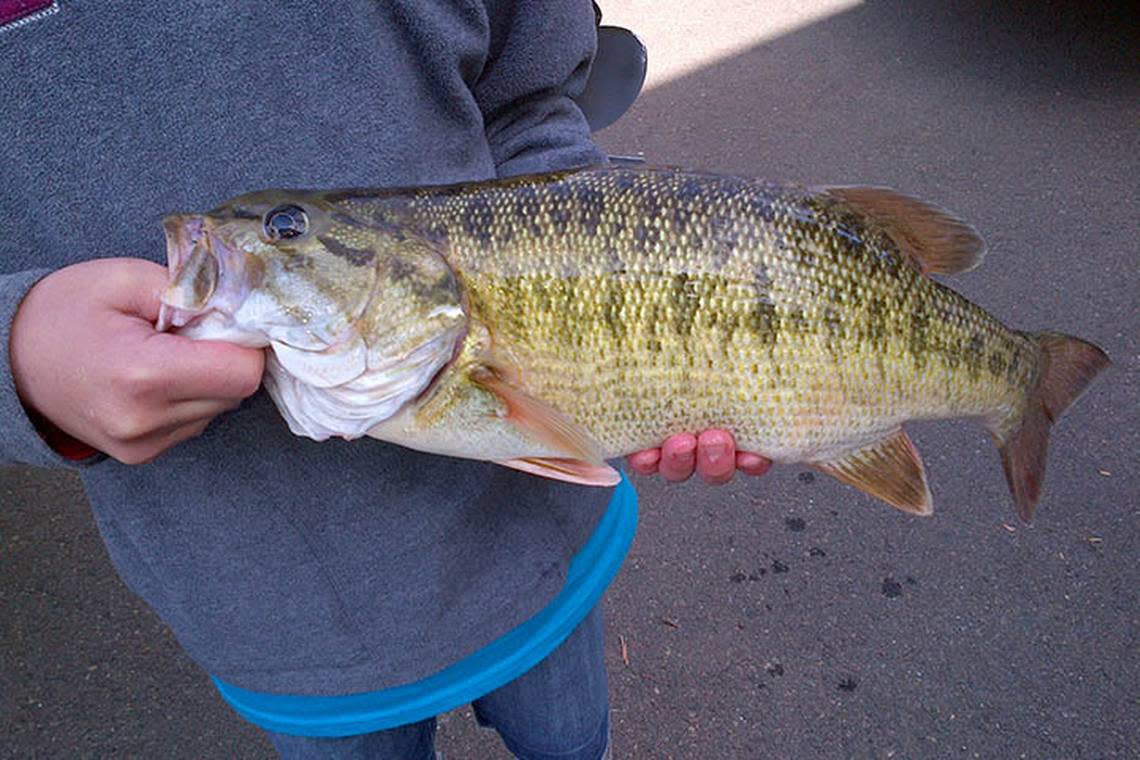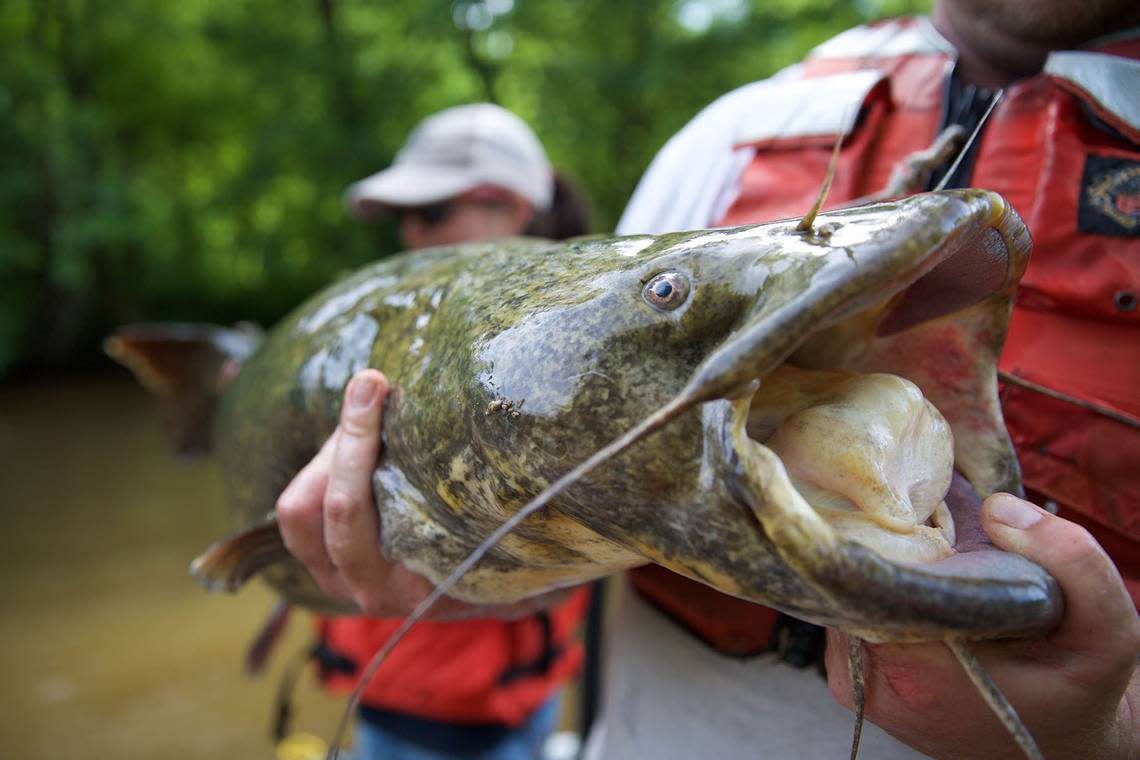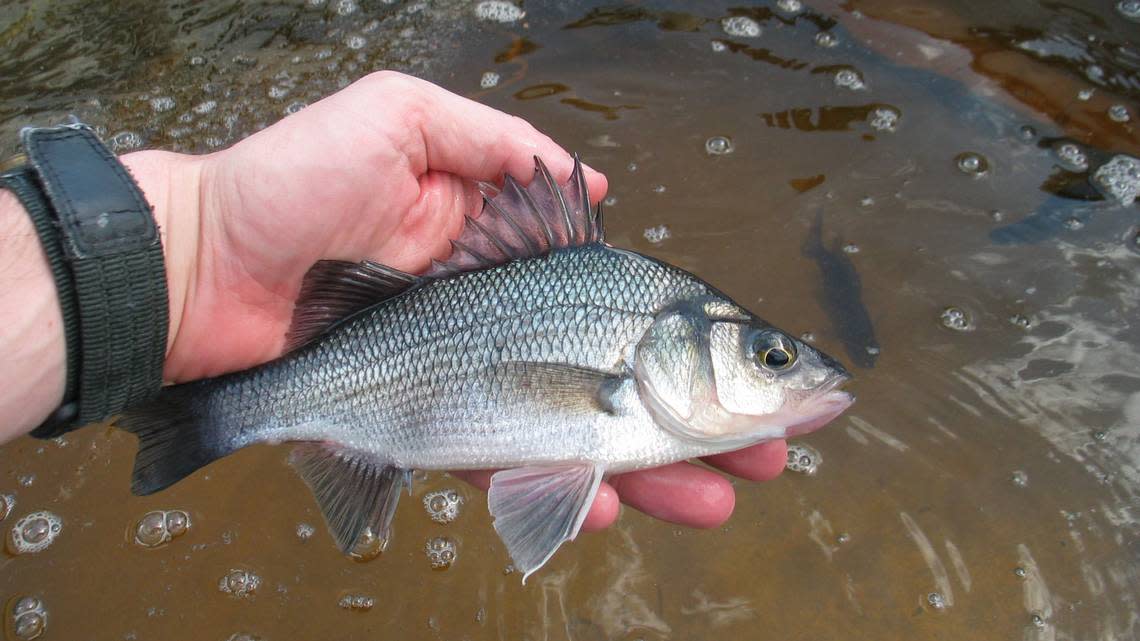These invasive fish threaten NC waters. Here’s what to do if you catch one
Many invasive fish, plus other animals and plants, are ecological nuisances in our state.
So the NC Wildlife Resources Commission groups them all together as “Aquatic Nuisance Species,” teaching local residents to take specific steps to ensure fish aren’t moved around into new bodies of water.
These nuisance species are a major threat to ecosystems, and they can have intensely negative impacts through habitat alteration, competitive interactions, hybridization and predation, according to the NCWRC.
“Many invaders will overtake the ecosystem where they are introduced because there is likely no natural predator for them, and they have some biological advantage over our native animals,” said Rachael Hoch, NCWRC’s inland fisheries division assistant chief, through spokesperson Anna Gurney.
“Once an invader is present, many native species will struggle to survive — or their population may be greatly reduced.”
Just like many parts of North Carolina’s ecosystems, fish species are greatly impacted by climate change, and particularly in freshwater environments, said NC State climatologist Corey Davis.
Warmer air brings about warmer water, for example, which has less dissolved oxygen for fish to breathe, he said. And larger swings in our rainfall patterns can cause flash flooding, increased salt content and more sediments and contaminants in our waters.
“Changing conditions can welcome invasive species either from warmer climates or that can handle harsher environments, like low dissolved oxygen levels. These invasive species can often out-compete or directly prey on our native species, so that’s another threat to their survival in the areas where they’ve always lived,” Davis said.
Here’s what to know about NC’s aquatic nuisance species:
Look out for these invasive fish in NC
Here are the top five invasive fish species in North Carolina:
1. Alabama Bass: An imminent threat to native black bass fisheries throughout the southeastern United States.
This fish is not native to any part of North Carolina. They were illegally introduced to the state by fishers and the earliest known observations were in the 1980s in Lake Chatuge along the Georgia border.
How to identify Alabama Bass:
Typically 18 inches in length.
Olive green on top with lighter color on sides.
Horizontal band blotchy in front of its tail.
Rougher scales than Largemouth Bass, and raw spots on sides.
Jaw does not extend beyond the back of its eye when the mouth is fully closed.
Source: ncwildlife.org/Fishing

2. Flathead Catfish: They’re most common in large rivers and lakes, and they primarily feed on live fish. Because of their large size and appetite, flatheads have contributed to the declines of several native fish species when introduced to new waters.
In NC, this species can be found in Little Tennessee (native range) and outside its native range in the Cape Fear, Tar, Neuse, Catawba, and Yadkin river basins and associated reservoirs; Roanoke River basin above Roanoke Rapids Dam, Sutton Lake and Lake Waccamaw.
How to identify Flathead Catfish:
Up to 61 inches, and can weigh nearly 125 pounds.
Broad, flat head.
Lower jaw protrudes, appearing as an underbite.
Back and sides are brown to yellow with black or olive-brown mottling. The color fades to a dirty white or yellow belly.
On the upper jaw inside the mouth, there’s a large tooth plate with backward extensions on each end.

3. Red Swamp Crawfish: These shellfish burrow, which can damage water courses and damage crops, particularly rice. Its feeding habits can disrupt native ecosystems and can displace native crawfish.
They prefer flowing water streams and ditches with mud or sand bottoms. In NC, this species can be found in the Piedmont and coastal plain systems in the Broad, lower Cape Fear, Catawba, French Broad, Lumber, Neuse, Pasquotank, Tar-Pamlico, and YadkinPee Dee basins.
How to identify Red Swamp Crawfish:
Up to 5 inches long.
Juveniles are usually striped or plain. Adults are dark red (practically black) and have a black wedge-stripe on the underside.
Bodies are rough, and they have long, narrow pincers.
4. River Herring: These fish are important in their native range, but when they’re established in reservoirs, they have been linked to fewer river-spawning sport fish, especially Walleye.
They prefer cooler water in reservoirs during the summer, and they breed in coastal rivers and streams. In NC, this species is widespread in Atlantic Slope rivers.
How to identify River Herring:
Up to 10 inches long in reservoirs.
Small herring with a dark dorsal (upper back) side.
Bluish to greenish in color with light sides and horizontal darker stripes.

5. White Perch: Fish eggs are an important part of this species’ diet, and White Perch are known to prey on eggs of Walleye, White Bass and other game species, declining their populations. Their diets also include zooplankton, worms and other fish.
They prefer low-salinity bodies of water but frequently inhabit coastal lakes and rivers. White Perch are native to the coastal rivers in NC, but they have been introduced as an invasive species to the Piedmont and mountain reservoirs.
How to identify White Perch:
Up to two feet long.
Thin, deep-bodied fish.
Sides are predominantly silver, but they’re sometimes olive-colored or golden.
No dark lines running the length of the body, and no tooth patch.
Source: ncwildlife.org/Portals/0/Fishing
What to do if you find and catch an invasive fish
The NC Wildlife Resources Commission asks North Carolinians to take the following steps:
1. Contact WRC: Snap a photo and call the wildlife helpline at 800-662-7137.
2. Clean: Be sure to clean fishing and boating equipment for all aquatic plants and animals.
3. Drain: Ensure you’re draining water from boats, live wells, bait buckets and other equipment.
4. Dry: When you’re finished on the water, dry your boat, trailers and gear. Allow these to dry completely for a week or more before you enter another body of water.
You can also wash your boat, trailer and gear with hot, soapy water of at least 140⁰ F.
5. Never move: To stop the spread of invasive species, make sure you never move fish, plants and other organisms from one body of water to another.
Triangle Asked & Answered: What do you want to know?
Have a question about something in our community? The News & Observer’s Service Journalism team wants your questions for our Triangle Asked & Answered series. Reach out to us by filling out this form or by sending an email to ask@newsobserver.com.
This scenic NC highway is feared by most drivers, new national survey says
Durham’s best restaurants, bars & coffee shops, voted by Nextdoor neighbors
